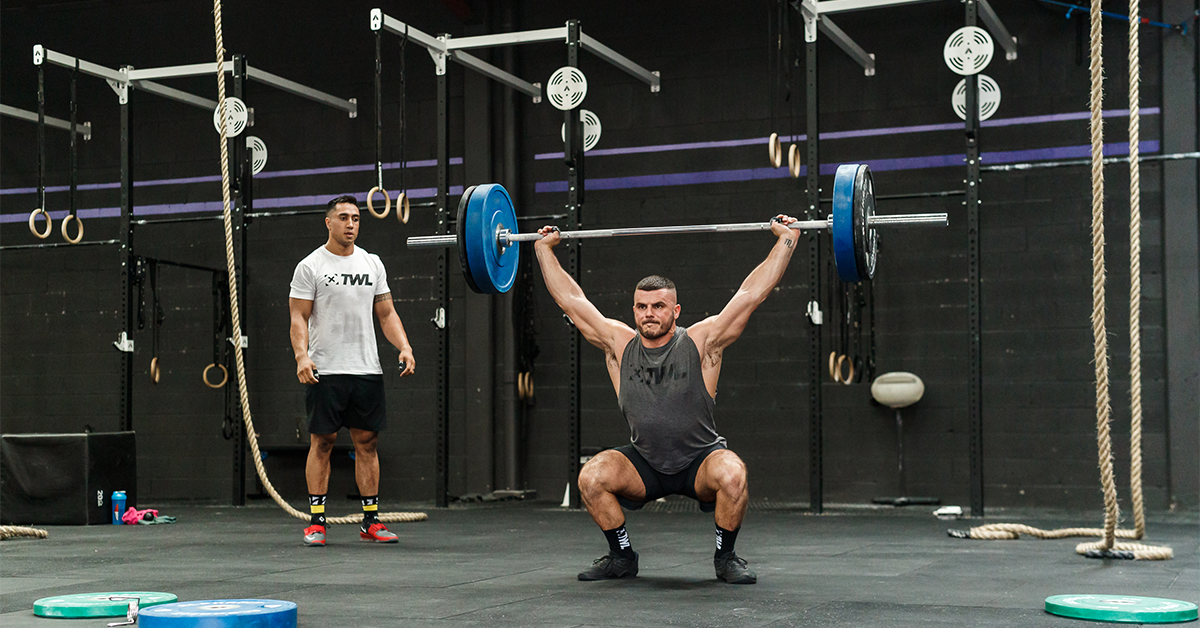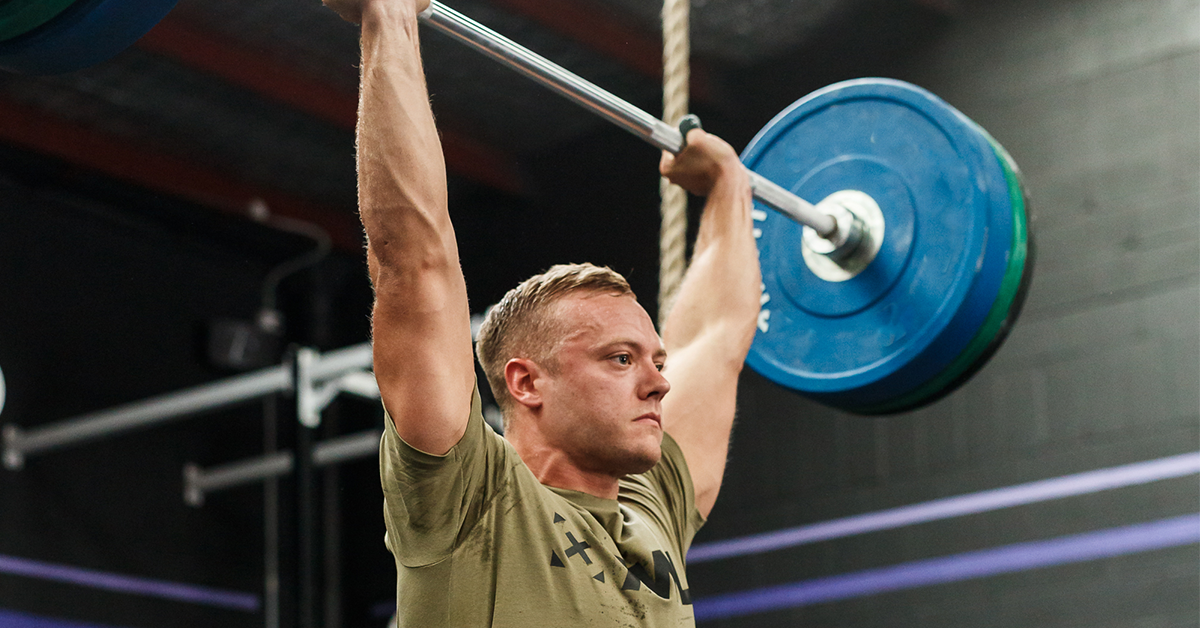Maybe you’ve heard your coach talk about “time under tension,” and the concept seems simple enough: It’s the… amount of time… you spend… under tension. Yes, you’re correct! But what exactly does that mean? Why is time under tension, and importantly, why does your coach keep bringing it up?
Let’s talk more about what this concept means and why you need to care about it.
Shop Now
First, What is Time Under Tension?
Time under tension refers to the amount of time that your muscles spend resisting weight or force.
Yup, that’s it.
It’s a very simple concept but understanding how to use it will be pivotal in building strength and hitting your fitness goals.
Let’s run through a quick example. Imagine one rep of your standard air squat. How much time do you spend under tension? Not much. You have the “loading” phase, where you’re squatting down to the bottom position and harnessing that power, and then you having the “explosion” phase, when you’re jumping up from your bottom position. It’s a quick movement.
On the other hand, think of a rep of your standard barbell back squat, which is going to take you a few more seconds to execute. The difference here isn’t merely that this movement is weighted, whereas our previous air squat is not. It’s also that a barbell squat is going to take you longer to complete. You’re going to spend more time under tension. In the time it takes you to complete one rep, someone else might be able to complete two to three reps of an air squat.
Okay, so you now understand what time under tension is. But why does it even matter?
Let’s keep going.

Why Does Time Under Tension Matter?
If you’re training regularly, then we’re going to go out on a limb and guess that you’re trying to build strength. (Fun fact: We call this hypertrophy, which is the growth of your muscle cells and tissues.) This then becomes one of the most important questions you can ask yourself: “How can I most efficiently and effectively build strength?”
The answer? Time under tension.
By tweaking your training so that you’re spending more time under tension, you’re going to be stimulating those muscle fibers far more. One study supports the idea that spending even just five additional seconds on a movement provides noticeable benefits in strength. Furthermore, the benefits extend even after you’ve finished working out. Another study found that making the eccentric part of a movement (the “lengthening” part — for example, lowering a dumbbell in a bicep curl) double that of the concentric (curling the dumbbell back up) can boost muscle growth.
So, what does all of it mean? It means that if you want to build strength and improve muscle definition, you might be wise to spend more time under tension.
Now, let’s talk about how you can do that.
How to Spend More Time Under Tension
This can be really simple, and the best part is that you don’t even need any weights or equipment to do it. Here are a few ways to incorporate time under tension.
Slow Down Any Part of the Movement
Athletes will very often slow down the negative, which is the down phase of the movement. As an example, when you’re lowering yourself from the pull-up bar, that’s a negative. When you’re lowering yourself to the ground in a push-up, that’s a negative. By slowing down that portion, you’re increasing time under tension — the amount of time you’re spending resisting a force.
But to be clear, you can still slow down the other part of the movement for great results. A slower pull-up is going to be just as hard as a slower lowering.
Add a Pause… Or a Couple of Them
Imagine your standard front squat. Now imagine stopping in the middle of it. This is a simple way to increase time under tension. You can pause at parallel or at the bottom of your squat — or both! Bear in mind that you never want to lose tension. After all, this is called time under tension. So, if you pause at the bottom of your squat, keep your core tight and your chest/elbows up. It’s not a time to relax!
(Also, this is an excellent way to miss the rep entirely and possibly even hurt yourself. A strong bottom position is important. Read our blog on four exercises for strengthening the bottom of your squat.)
Decrease the Weight to Increase the Time Under Tension
A simple dumbbell press is made 10 times harder when you slow the movement down. This means that if you normally use 30-pound dumbbells for these, you might need to take that weight down — and that’s perfectly okay. You won’t be lifting as much, but you’re going to be lifting it for longer, which means you’re still getting one heck of a burn.
Remember that you can increase time under tension for literally any movement, from lunges and kipping to barbell rows and deadlifts. We want to encourage you to always prioritize form and technique above all else! Increasing time under tension is pointless if your positioning is off, as this puts you in a vulnerable place where injury is more likely. Only spend as much time under tension as you safely can.
In functional fitness workouts, speed is often the name of the game. We’re trying to knock out as many reps as possible as quickly as possible. Don’t forget to slow things down. Time under tension is your friend. It might not look as sexy, but it works. Get after it!

















